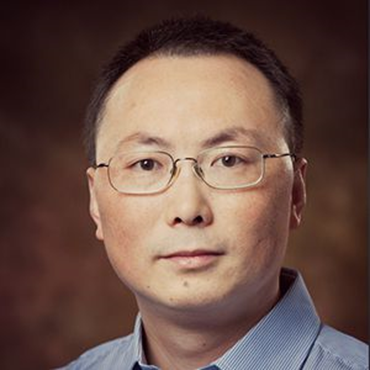
搜索网站、位置和人员

新闻与活动 活动信息
生命科学专题学术讲座 | 彭汉川:Mapping Brain Anatomy and Networks at Single Cell Resolution
时间
2023年6月7日星期三
16:00-17:30
地点
云谷校区E9-109
主持
西湖大学生命科学学院讲席教授 许田
受众
全体师生
分类
学术与研究
生命科学专题学术讲座 | 彭汉川:Mapping Brain Anatomy and Networks at Single Cell Resolution
时间:6月7日星期三16:00-17:30
Time:4:00-5:30 PM,Wednesday, June 7th,2023
主持人:西湖大学生命科学学院讲席教授 许田
Host:Dr. Tian Xu, Chair Professor, School of Life Sciences
地点:云谷校区E9-109
Venue:E9-109, Yungu Campus
主讲嘉宾/Speaker:

Hanchuan Peng, Fellow, IEEE, AIMBE, AAIA; Executive & Founding Dean – Institute for Brain and Intelligence; Executive Director – SEU-ALLEN INSTITUTE Joint Center
Hanchuan Peng (Fellow, IEEE, AIMBE, AAIA; Executive & Founding Dean – Institute for Brain and Intelligence; Executive Director – SEU-ALLEN INSTITUTE Joint Center) develops technologies to generate, manage, visualize, analyze, and understand massive-scale structure and function data related to brains and other biomedical applications. Peng was the Director – Advanced Computing, Allen Institute for Brain Science, and also an Affiliate Professor with University of Washington. Peng also built the first Big Image Computing team of Janelia, HHMI. With about 25,000 citations, Peng is highly cited for a number of widely adopted algorithms and software/hardware systems, including Vaa3D (http://vaa3d.org) - a high-performance platform for very large multi-dimensional images (Nature Biotechnology 2010; Nature Methods, 2009, 2011, 2012, 2016, 2017, 2022; Nature Communications, 2014, 2019; Nature Protocols, 2014), mRMR – minimum Redundancy and Maximum Relevance Feature Selection (IEEE-TPAMI, 2005; a top-10 most cited and downloaded paper since 2005), Smart Microscopes (Nature Communications, 2014), etc. He built/co-developed the first 3D digital atlases for several widely used model systems at single cell resolution (C. elegans - Nature Methods, 2009; Cell, 2009; fruitfly - Nature Methods, 2011; mouse – Nature 2021a; Nature 2021b; Nature 2014; Nature Neuroscience 2019; human – Science Advances 2023), and led the “BigNeuron” initiative (http://bigneuron.org; Nature Methods, 2023; Neuron, 2015). Peng was inducted into AIMBE (American Institute for Medical and Biological Engineering) (2019), a co-recipient of USA National Academy of Sciences’ Cozzarelli Prize recognizing annual best papers (2013), DIADEM award (2010), a Top-10 Annual Breakthroughs of Chinese Life Sciences in 2021, anonymously selected as Hot Topics for both SfN’2018 and SfN’2019. He was elected as an IEEE Fellow in 2020 for his contribution of big data mining, visualization, and analytics. His work has been featured in Nature, Science, NPR, NBC, New York Times, etc. Peng founded international Bioimage Informatics conferences in 2005, and iconized “Bioimage Informatics” as a new field in major bioinformatics journals including Bioinformatics, BMC Bioinformatics, Nature Methods, Nature Biotechnology, etc. He was the co-Editor-in-Chief of Brain Informatics (2016-2020) and a Section Editor of BMC Bioinformatics (2011-2018), and Bioinformatics (2021-2024)..
讲座摘要/Abstract:
In several cutting-edge neuroscience initiatives, it is highly desired to acquire data of single neurons at multiple spatial and structural levels and at the same time to map them to a standard atlas. In this talk I will discuss a few of our recent efforts to map brain anatomy and networks at the single neuron/cell resolution. In particular, we developed an open cloud computing platform to manage and analyze petabyte-scale multi-dimensional imaging data, at different spatial scales and from multiple imaging and data-interaction modalities. Our platform features a whole repertoire of tools including cloud-based data serving, multi-clients synergetic computing, mobile and desktop applications, supercomputing, immersive headsets and web interfaces, streamlined high-throughput production pipeline, and interactive data mining. Using the platform, we have started to accumulate and analyze some of the largest imaging datasets in the field, and generated new observations of the single-neuron level diversity of the brain anatomy, cell types, and neuronal networks.
联系人/Contact:
生命科学学院
于文越 yuwenyue@westlake.edu.cn

















